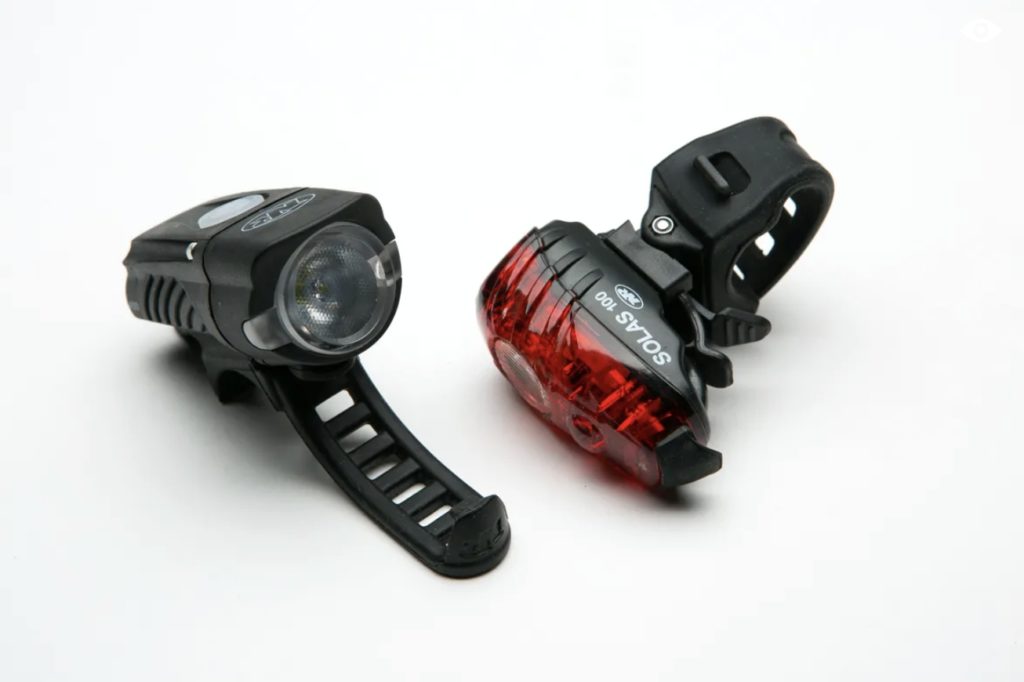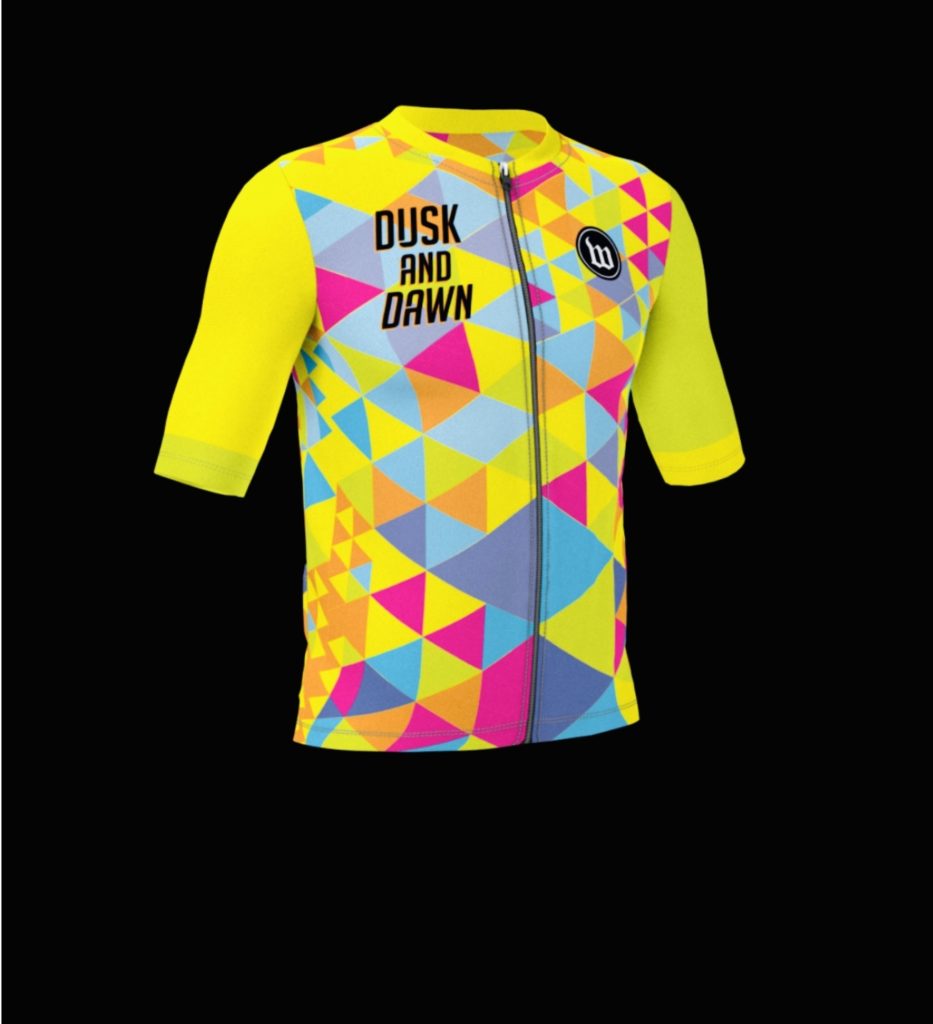The season for knowing your state’s laws around lighting and investing in hi-viz and reflective clothing has arrived. We guide you through what you need to know to stay safe and stay legal.
With Halloween already behind us, we’ve passed the mid-point between Autumn and Winter. Days are continuing to grow shorter, while nights are growing longer, and the weather is getting colder by the day. Compounding this, Daylight Saving Time has come to an end. These seasonal and temporal changes affect everybody in the northern hemisphere, but cyclists most of all, because our sport often has us on the roads in the mornings and evenings. With that in mind, it’s time for some reminders about staying safe on the roads now and in the coming months.
See and Be Seen
Generally, your bike is required to be equipped with both rear and front lighting equipment if you ride between sunset and sunrise. However, the specific requirements will vary from state to state. At a minimum, your state will require you to be equipped with a white front light visible from a distance of a few hundred feet, and a red rear reflector or red light. But check your own state laws, because the specific requirements vary by state.

Requirements for lights vary by state, so check your local laws. Photo: Brad Kaminski | VeloNews.com
You might want to consider something brighter than the minimum requirement, though. Even a lighted match is visible from 500 feet, and the dimmer your light is, the further away motorists perceive you to be, giving them a false sense of how much time they have to react to your presence on the road. The laws in your state only tell you the minimum requirement, but they allow you to do more than the minimum.
On the other hand, if you don’t meet the minimum, you can be ticketed. And if you ride without the minimum lighting requirement for your state and are involved in a crash, your own negligence becomes an issue. In some states, a lighting equipment violation is prima facie evidence of negligence in a crash (meaning it’s considered evidence of your negligence, but you can rebut it with your own evidence), while in other states, a lighting equipment violation is per se negligence in a crash (meaning you will be considered negligent because you violated the law). You can help drivers see you and save yourself a legal nightmare by riding with the required lighting equipment at night.
But you also need to consider bringing them in the daytime too, in case you get caught out after dark, or in case daytime weather conditions such as fog, rain, or snowstorms create limited visibility. You may even want your lights just to help drivers see you better in the daytime.
If your lights are battery-operated, be sure to have spare batteries on hand. The last thing you want is to have your lights go out on your ride home after sunset.
You can also help drivers see you better with your kit choices. This is the time of year when hi-viz and reflective gear really shine, because dawn, dusk, and nighttime are the hours when a disproportionate number of crashes happen. Fluorescent colors are particularly effective in low light conditions such as dawn, dusk, haze, and fog. But at night, you lose the benefit of fluorescent colors, because they need UV light to work. This is when reflective material is more effective, because it works when you’re in the beam of a car’s headlights. Because motion helps drivers recognize what they are seeing, the best place for reflective material is on your arms and legs.

Hi-Viz jerseys are becoming more widely available. Image provided by Bob Mionske
Don’t Get Lost in the Glare
Sunrise and sunset can be two of the most dangerous times to be on the road, because with the sun low on the horizon, drivers can be blinded by the sun glare if they are facing into the sun. If you’re facing into the rising or setting sun on your ride, the drivers behind you can’t see you in the sun’s glare. And if the rising or setting sun is to your back, the drivers in oncoming traffic can’t see you; you’ll know this is happening by the length of your shadow and the glare coming off of the windshields of oncoming traffic. And if you’re crossing an intersection perpendicular to drivers blinded by the sun, they can’t see you either.
This is an extremely hazardous situation for cyclists to be in, and if you find yourself in this situation, you need to pull off the road and wait briefly for the angle of the sun’s rays to change. Alternatively, you can change your direction and take a different route. Whatever you do, don’t just keep riding in the glare. We’ve lost some very talented and experienced roadies to the sun’s glare, including John Stenner, Jeff Littman, and Missy Hardeman.
The Bottom Line
These basic safety details help us keep our sport safe, and to keep you safe, both physically and legally. Cycling is one of the safest sports out there, and with a little attention to the seasonal changes, we can safely enjoy our sport year-round.
Research and drafting assistance by Rick Bernardi, J.D.
This article, Autumn is Here, Winter is Coming, was originally published on Velonews on November 7, 2019.
Bob Mionske is a former competitive cyclist who represented the U.S. at the 1988 Olympic Games (where he finished fourth in the road race), the 1992 Olympics, as well as winning the 1990 national championship road race.
After retiring from racing in 1993, he coached the Saturn Professional Cycling team for one year before heading off to law school. Mionske’s practice is now split between personal-injury work, representing professional athletes as an agent and other legal issues facing endurance athletes (traffic violations, contract, criminal charges, intellectual property, etc.).
Mionske is also the author of “Bicycling and the Law,” designed to be the primary resource for cyclists to consult when faced with a legal question. It provides readers with the knowledge to avoid many legal problems in the first place, and informs them of their rights, their responsibilities, and what steps they can take if they do encounter a legal problem. If you have a cycling-related legal question please send it to Bob, and he will answer as many of these questions privately as he can. He will also select a few questions to answer in this column. General bicycle-accident advice can be found at bicyclelaw.com.
Important notice:
The information provided in the “Legally Speaking” column is not legal advice. The information provided on this public website is provided solely for the general interest of the visitors to this website. The information contained in the column applies to general principles of American jurisprudence and may not reflect current legal developments or statutory changes in the various jurisdictions and therefore should not be relied upon or interpreted as legal advice. Understand that reading the information contained in this column does not mean you have established an attorney-client relationship with attorney Bob Mionske. Readers of this column should not act upon any information contained in the website without first seeking the advice of legal counsel.
© Bob Mionske 2019. All Rights Reserved.




